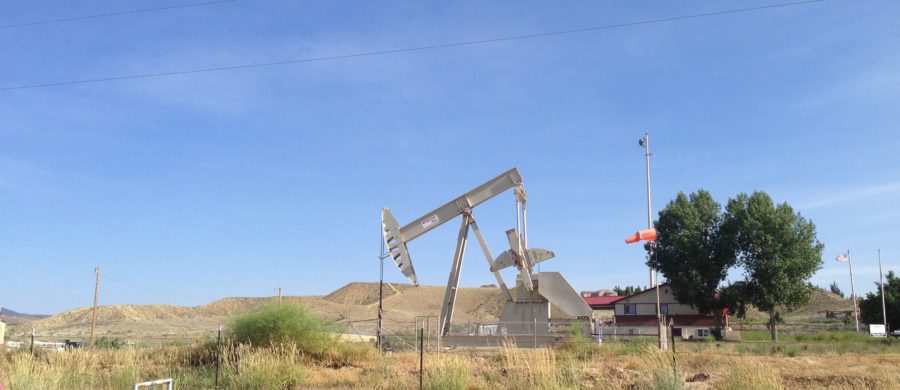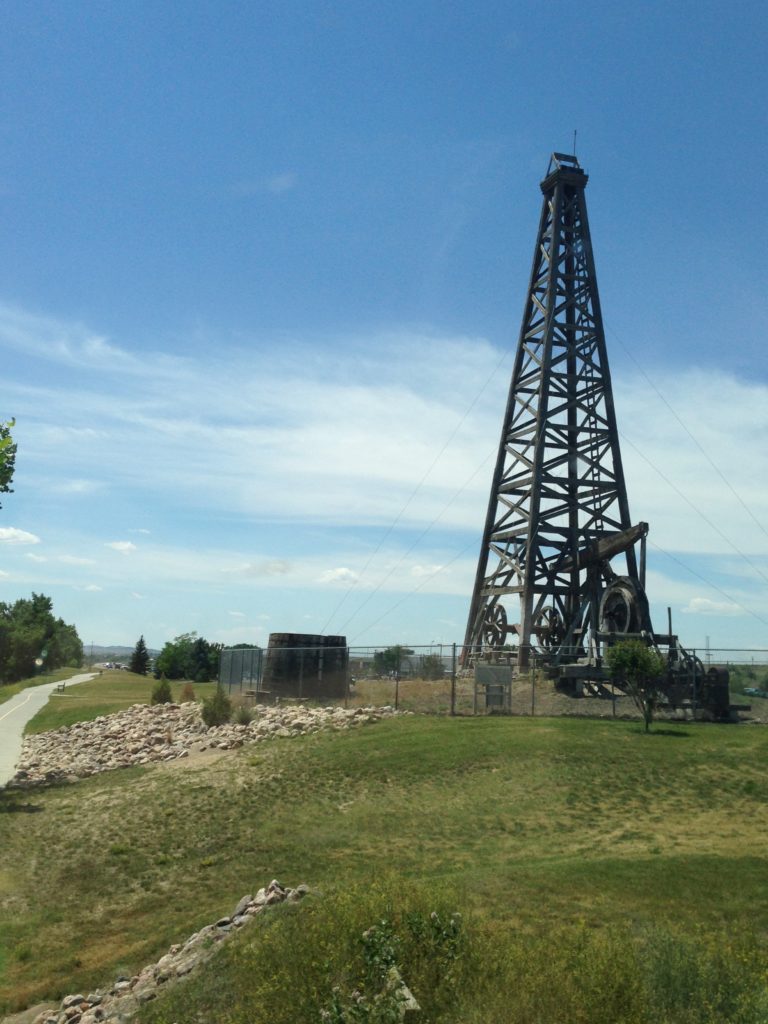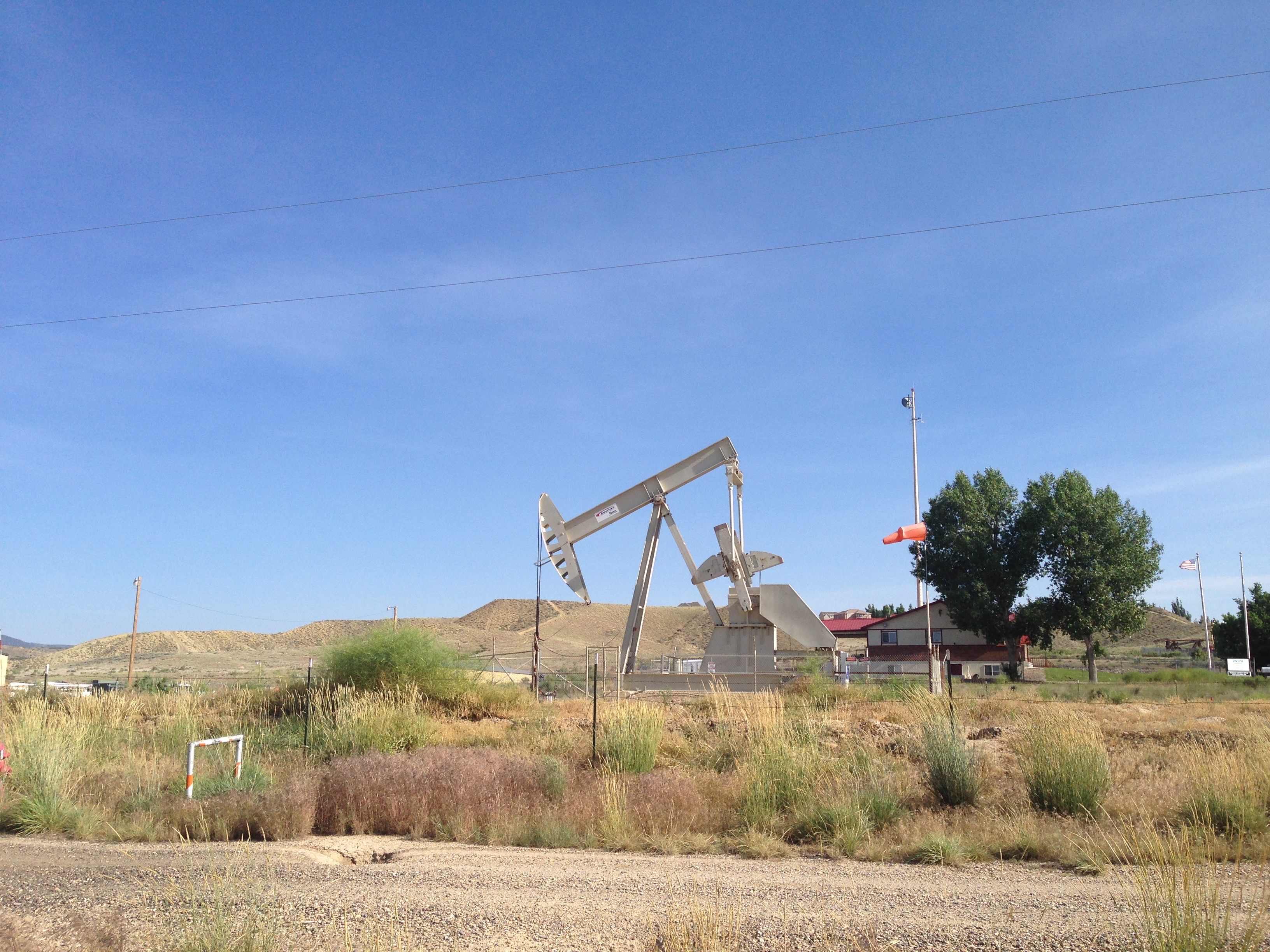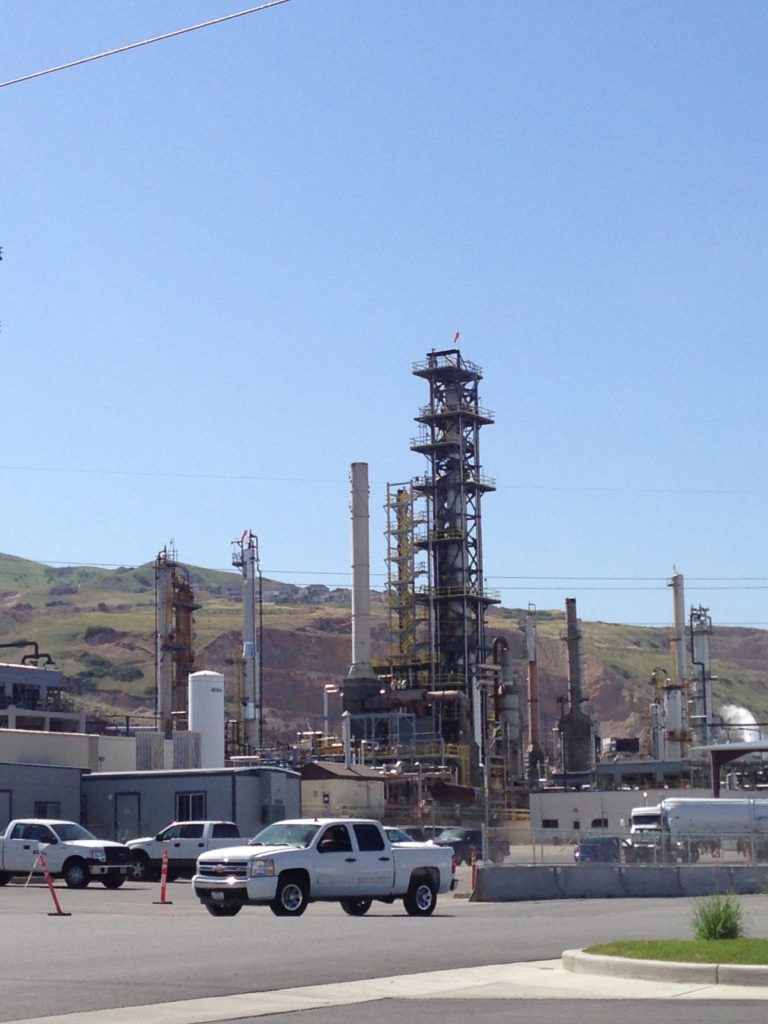
When Oil Was Modern
Technology’s Stories vol. 5, no. 3 – doi: 10.15763/jou.ts.2017.08.27.02
PDF: McIntyre_When Oil Was Modern
President Trump’s June 2017 decision to withdraw from the Paris Climate Accord has once again placed oil and fossil fuels in the political crosshairs.[1] A recent article in MIT’s Technology Review describes oil companies as a hindrance – representatives of a dinosaur industry that perpetuates dependence and encourages monopoly.[2] The UK think tank Chatham House calls oil’s corporate structure outdated.[3] Others simply deride oil production as both destructive and unsustainable.[4] Such accusations are as old as the industry. As early as the 1880s, Pennsylvania landowners bemoaned destructive land-clearing and ubiquitous pipeline spills.[5] Beginning in the nineteenth century and continuing to the present day, regulation of unscrupulous and wasteful oil companies has been a constant source of friction among concerned citizens, federal regulators, and in the US Congress.[6] Despite constant tension, during the middle decades of the twentieth century the largest American oil companies collaborated heavily with government labs and university researchers to increase efficiency, reduce waste, and imagine a future driven by an ever-expanding supply of fossil-fuel energy. As we look toward a period of energy transition, with the depletion of global oil supplies and looming climate change heralding a complete reorientation of transportation, manufacturing, and daily consumption patterns, we can learn much from these utopian midcentury collaborations as we look to secure a stable, sustainable energy future.

Significant collaboration between the US government and the oil industry began during World War I. However, it was not until World War II the federal funding for petroleum industry research and development took off. President Roosevelt and other federal officials feared a nation-wide oil shortage as tanker shipment from the Gulf of Mexico to the East Coast were blocked by German forces. Beginning in 1940, the newly formed Petroleum Administration for War (PAW) funded the expansion of overland oil pipeline networks between Midcontinent oilfields in Texas and Oklahoma and East Coast energy markets. The PAW collaborated with the nation’s largest oil companies – including Humble Oil (later EXXON) and the Texas Company – to build new refineries and chemical plants along the Texas Gulf. At these new refineries petroleum scientists benefitted from wartime patent suspensions, collaborating to develop refining processes that more efficiently “cracked” crude oil and natural gas into its component chemical parts. These efforts developed an array of new products including 1000 octane aviation fuel, synthetic rubber, and early rocket fuel.[7] Wartime propaganda, postwar advertising, and industry lobbyist groups, such as the American Petroleum Institute, all praised this collaboration as demonstrating US oil companies’ prudent management skills, flexibility, and culture of innovation.[8]

Wartime efficiency and improved infrastructure made the refining process cheaper and more efficient. Throughout the 1950s and 1960s oil companies promoted increased oil consumption to offset low crude prices. One ad by the Esso Company, the international subsidiary of Standard Oil, captured the desired sentiment stating, “The better you live, the more oil you use.”[9] These efforts met with widespread success. Domestic gasoline consumption alone skyrocketed from approximately 3.7 to 7.5 million barrels per day between 1950 and 1970.[10]
Increased consumption was not simply the result of clever advertising. During the 1950s and 1960s, Eisnehower’s Interstate Highway System and the spread of postwar suburbs boosted domestic automobile sales as families pursued the “American Dream” of detached home ownership. Simultaneously, further developments to the thermal cracking process created an array of new, durable plastics. Natural gas, once a waste product burned off during oil extraction, was plentiful in booming Texas oilfields. In the 1950s, natural gas became the base material for an array of new consumer goods. With patent exclusivity once again in place postwar, chemical companies such as DuPont and Dow became synonymous with plastic products ranging from Saran Wrap to Spandex.

Hoping to meet ever-rising demand for oil and under Cold War pressure to decrease oil imports, immediately after World War II oil companies once again turned to new technology as one way to expand the domestic oil supply. These efforts led to innovation in a variety of fields. Graduates from relatively new university programs in geophysics and petroleum chemistry made the University of Texas and other land grant universities hubs for petroleum research. Industry labs such as Sun Oil’s Marcus Hook facility and Phillips Petroleum’s Phillips Research Center alternately competed and collaborated with academic scientists and researchers at the US Bureau of Mines experimental labs in Bartlesville, Oklahoma and Laramie, Wyoming. Later, the newly formed Department of Energy (DOE) benefitted from industry efforts to increase precision in everything from radar technology, radiodetective imaging technologies, early computing, cartography, precision mining, and deep sea diving.[11]
As domestic oil reserves declined in the 1960s, improvements to oil detection and extraction technology became a particularly lucrative field. Following in the footsteps of Howard Hughes, who in 1908 made a fortune patenting the tri-cone drill bit, a new wave of inventors formed independent oil tools companies. The Baker Oil Tools Company developed new drilling chemicals. Schlumburger pioneered using electrical signals to identify subsurface rock formations.[12] A forerunner to today’s digital tech startups, successful industry patent holders were quickly bought out and their technologies absorbed by large oil companies. For example, oil scientist Serge Scherbatskoy, after stints at Lawrence Livermore and Sandia National Laboratories, filed dozens of patents for technologies designed to detect radioactivity in subsurface oil deposits. In the 1960s his designs were bought by companies such as the newly combined Baker-Hughes and Sperry Sun.[13] Similarly, industry inventor and engineer Everett DeGoyler made millions developing surveying and geophysical technologies. He invested in Geophysical Services Incorporated which pioneered early seismic detection technology during World War II. Geophysical Services later became Texas Instruments, the first producer of the silicon transistor and integrated circuit.[14]
Into the 1980s, oil research was promoted by both oil companies and the US government as central to Cold War victory and American economic growth. This was particularly heavy-handed in the 1950s and 1960s as oil companies used advertising, press releases, and corporate philanthropy to cash in on American postwar optimism and consumerism, advertising that oil production spurred new technological development and oil consumption produce a new, unlimited future. According to the American Petroleum Institute, new oil discovery and extraction technologies would provide an unending, ever-expanding supply of oil that would revolutionize human transportation and daily life.[15] An illustrative 1963 ad from Mobil Oil boasted that oil “propels golf balls and probes the moon.”[16] As the story goes, oil companies, using new detection and processing technologies, would innovate the US out of a finite oil supply and increasingly tenuous geopolitical hegemony and into an unlimited, space-age future.
In some ways, these efforts were successful. Although US oil companies were feeling deep pressure from the rising prominence of the Organization of Petroleum Exporting Countries (OPEC), new well flooding technologies, in which drillers injected high pressure gas, water, and other chemicals into existing wells to boost subsurface pressure, allowed ageing US oilfields to continue production long after their expected date of depletion. Widespread use of the seismograph and down-hole imaging technologies allowed drillers to test for particular rock formations while the drill was in operation. The development of early horizontal drilling technology expanded offshore drilling efforts in California, the Texas Gulf, and the Arctic. Signaled the success of these new technologies, between 1960 and 1970 total domestic oil production increased from 7,035 thousand barrels per day to 9,637 thousand barrels per day.[17]
In the late 1960s federal researchers partnered with oil tools companies to build the US Cold War military industrial complex and expand the industry’s technological importance. Texas Instruments, Oklahoma-based Halliburton, and other oil tools companies applied subsurface imaging and detection technologies to the development of missile guidance systems and early satellite technology.[18] Houston, by then the hub for the nation’s oil industry, was conveniently located near the new NASA Space Center. NASA contracted EXXON to develop new liquid hydrogen fuels for the space program.[19] The beneficiaries for these projects were twofold as research and development conducted for federal projects then helped to perfect oil technologies and increase oil production.
Sometimes, however, such collaboration was ill-conceived. In 1967, hoping to demonstrate non-military uses for existing nuclear technology, the DOE partnered with the El Paso Natural Gas Company to develop the use of nuclear weapons for oil extraction. Between 1967 and 1973 the innocuously titled Project Gasbuddy detonated four nuclear weapons belowground in the mountains near Farmington, New Mexico. Designed to breakup subsurface rock and ease the removal of hydrocarbons trapped in hard-to-access rock formations, the project worked as proposed. However, the nuclear weapons also irradiated the subsurface rock strata and made the natural gas trapped within so much toxic, hazardous waste.[20] The site is now owned by the National Parks Service and marked with a warning for anyone who might attempt to dig up the irradiated material. This experiment, which was part of a larger DOE effort to use nuclear weapons in the agriculture and mining industries, represented a high-water mark in direct federal funding for oil research and development.
After the oil shocks of 1973, increasing costs meant that the US oil industry entered a period of widespread consolidation. The number of smaller companies declined sharply and the remaining “Major” US oil companies expanded their global extraction networks in an effort to compete with Middle East producers. In the early 1980s, the Organization of Arab Petroleum Exporting Countries (OAPEC) flooded the market with oil, causing a sharp drop in global oil prices. US oil production stagnated for the first half of the 1980s. In 1985, domestic production entered a period of sharp decline that would last until 2008.[21]
During the 1980s, US oil production was in decline and most oil companies increasingly operated overseas. However, federal funding to expand the domestic oil infrastructure and subsidize experimental research did continue. In 1979 the DOE launched the Eastern Gas Shales Project in the Appalachia Basin, proving that shale rock contained extractable deposits of natural gas. In later decades, this research would be used by George P. Mitchell of Houston-based Mitchell Energy to perfect hydraulic fracturing technologies. Beginning in 1984 oil companies again cashed in on lucrative defense contracts, collaborating on the development of satellite technologies that formed President Ronald Reagan’s Strategic Defense Initiative.
However, after 1980, Reagan-era budget cuts meant that DOE or National Lab funding for energy research decreased. In contrast, subsidies for private industry expansion expanded and oil companies took this opportunity to further expand their transport infrastructure. New pipelines through the Arctic as well as offshore drilling operations in federal waters were heavily subsidized. By this point, oil companies had enjoyed decades of collaboration with the federal government and had benefited from prolonged campaigns to publicize the industry’s technological innovations. This inertia helps to explain such continued expansion even as the cost of fossil fuel use and extraction was becoming increasingly clear.
Today, research and development still makes up a significant portion of US oil company spending. Similarly, the 2017 DOE Office of Fossil Energy budget still includes $869 million in funding for oil and gas research and development.[22] However, the industry’s reputation is heavily tarnished. Midcentury advertising that promised a better life through oil consumption rings particularly hollow. The oil shortages of the early 1970s demonstrated to many both the vulnerability of US oil companies and the finite nature of global petroleum reserves. The rise of the US environmental movement has led many to see the search for oil as a fundamentally destructive process rather than a catalyst for technological innovation. In response, oil companies have been increasingly called upon to apply research and development efforts to the cumulative environmental and public health crisis they helped to create over the past century.[23]

What can this twentieth-century history of technological development, government-industry collaboration, and ultimate decline teach us about our current moment? With the benefit of hindsight, it is easy to see the makings of our current environmental crisis in US oil companies’ midcentury hubris. Efforts to increase domestic oil consumption at a time of increasing oil imports demonstrate a focus on immediate profit rather than long-term supply sustainability. This focus was helped along by close collaboration with federal researchers and US defense efforts. Since the 1950s, federal and state regulators have been largely sympathetic to the concerns of oil companies and oil companies have been slow to abandon projects once begun. Despite the creativity of a generation of inventors, the oil industry’s large and expensive infrastructural network constrains innovation with the need to justify money already spent and projects already built. Gasbuddy is one example. However, the industry’s stilted response to the Exxon Valdez oil spill in 1989, efforts to cover up the consequences of the Deepwater Horizon spill in 2010, and paramilitary pushback against Dakota Access Pipeline protesters in 2016 demonstrate the ongoing consequences of such industry resistance to change.[24]
As baby boomers retire, the oil industry is having trouble hiring a new generation of engineers.[25] Private investment in oil companies, once understood as an extremely stable option, has become political, fraught with the connotations of exploitation and environmental negligence.[26] In such a moment, oil companies need to redefine themselves. Looking back at industry-government collaboration that resulted in significant leaps forward in long-range censor and analog computing technologies suggests one way forward. Diversified, truly exploratory research, either funded through federal dollars or conducted by independent energy inventors is one way to further develop renewable and alternative energy technologies. However, such a proposition faces steep challenges at a moment when proposed federal cuts to exploratory research, especially to alternative fuels research, spell bad news for energy startups. However, the future has not yet been written. The ability to learn from past mistakes is a hallmark of innovation and the oil industry has many to choose from. Looking backward – even as we move forward – can prevent the United States’ largest energy giants from being left behind.
Dr. Sarah Stanford-McIntyre is the Bernard Majewski Fellow at the American Heritage Center and an instructor in the Department of History, University of Wyoming. She is currently working on an environmental history of the Texas oil industry, focusing on the ways in which twentieth-century oil producing communities understood industry expansion and technological development.
[1] Michael D. Shear, “Trump will Withdraw US from Paris Climate Agreement, New York Times, June 1, 2017, https://www.nytimes.com/2017/06/01/climate/trump-paris-climate-agreement.html.
[2] Richard Martin, “Big Oil Companies Have Already Become Dinosaurs,” MIT Technology Review, May 16, 2016, https://www.technologyreview.com/s/601471/big-oil-companies-have-already-become-dinosaurs/.
[3] “International Oil Companies: The Death of the Oil Business Model,” Chathamhouse, accessed May 5, 2016, https://www.chathamhouse.org/publication/international-oil-companies-death-old-business-model.
[4] Robert Johnson, “These Pictures May Give You Nightmares about the Canada Oil Sands,” Business Insider, October 18, 2012, http://www.businessinsider.com/photos-destructive-canada-oil-sands-2012-10
[5] “Experience of Farmers, and others owning land along pipe lines now in operation,” Affidavits of suffering land owners, from devastations caused by pipe line companies, State of Pennsylvania, Union County, 1883, Hagley Museum and Library, Wilmington, Delaware.
[6] Harold Ickes, Fightin’ Oil (New York: Alfred A. Knopf, 1943).
[7] Interoffice Correspondence, Box 82 A. E. Pew Jr., Sun Oil Company Collection, Series 10, Collection 1317, Hagley Museum and Library, Wilmington, Delaware.; Correspondence, Box 86, A. E. Pew Jr., Sun Oil Company Collection, Series 10, Collection 1317, Hagley Museum and Library, Wilmington, Delaware.; Petroleum Administration for War, History of the Petroleum Administration for War, 32., Box 89, Sun Oil Company Collection, Series 10, Collection 1317, Hagley Museum and Library, Wilmington, Delaware.
[8] Ibid.
[9] Advertisement, Esso Company, Box 7, Collection 60, Warshaw Collection of Business Americana, Rubber Section, Archives Center, National Museum of American History, Smithsonian Institution.
[10] Michael Ratner and Carol Glover, “U.S. Energy: Overview and Key Statistics,” Congressional Research Service, Washington, D.C., June 27, 2014, accessed June 6, 2017, https://fas.org/sgp/crs/misc/R40187.pdf.
[11] “Copper and Brass in the Petroleum Industry,” Box 6, Collection 60, Warshaw Collection of Business Americana, Petroleum Section, Archives Center, National Museum of American History, Smithsonian Institution.
[12] Folder ‘Baker-Hughes,’ and ‘Sperry Sun,’ Trade Literature Collection, Smithsonian Library, Washington, D.C.
[13] Patents, Box 20, Collection 936 Serge Sherbatskoy Papers, 1925-2002, Archives Center, National Museum of American History, Smithsonian Institution.
[14] “Masters of the Hunt,” Texaco Star Magazine, 1948, Box 11, Collection 60, Warshaw Collection of Business Americana, Petroleum Section, Archives Center, National Museum of American History, Smithsonian Institution.
[15] “Odessa Oil Progress Week Observance Expected to Rank as Nation’s Largest,” Odessa American, October, 12. 1952, 1.; Photographs, Box 69, American Petroleum Institute Photograph and Film Collection, 1860s-1990 (bulk 1955-1990), Archives Center, National Museum of American History.
[16] Mobil Oil Co., Advertisement, Folder ‘Mobil corporation subject files affiliates, Mobil Chemical Company: Petrochemicals Division 1956-1999,’ Box 2.207/F122, Exxon Mobil Historical Collection, The Dolph Briscoe Center for American History, The University of Texas at Austin.
[17] “US Field Production of Crude Oil,” U.S Energy Information Administration, June 30, 2017, accessed, July 11, 2017, https://www.eia.gov/dnav/pet/hist/LeafHandler.ashx?n=PET&s=MCRFPUS2&f=A.
[18] Folder ‘Halliburton Annual Reports 1966-1974,’ Company Annual Reports, Special Collections, Permian Basin Petroleum Museum, Midland, Texas.
[19] Press Release, Folder ‘Mobil corporation subject files affiliates, Mobil Chemical Company: Petrochemicals Division 1956-1999,’ Box 2.207/F122, Exxon Mobil Historical Collection, The Dolph Briscoe Center for American History, The University of Texas at Austin.
[20] Folder, ‘El Paso Corporation,’ Company Annual Reports, Special Collections, Permian Basin Petroleum Museum, Midland, Texas.
[21] “US Field Production of Crude Oil,” U.S Energy Information Administration, June 30, 2017, accessed, July 11, 2017, https://www.eia.gov/dnav/pet/hist/LeafHandler.ashx?n=PET&s=MCRFPUS2&f=A.
[22] “FY 2017 Budget Request Office of Fossil Energy,” Christopher Smith, U.S. Department of Energy, February 9, 2016, accessed July 11, 2017, https://energy.gov/sites/prod/files/2016/02/f29/FY17_Budget_Presentation.pdf.
[23] Folder ‘Mobil Corporation: Subject Files: affiliates: Mobil Chemical Company,’ Box 2.207F122 EXXON Mobil Historical Collection, The Dolph Briscoe Center for American History, University of Texas at Austin.
[24] Bryan Walsh, “The Afterlife of Oil Spills, Time Magazine, March 14, 2014, accessed June 6, 2017, http://time.com/35452/the-afterlife-of-oil-spills/. https://www.theguardian.com/environment/2015/jul/02/bp-will-pay-largest-environmental-fine-in-us-history-for-gulf-oil-spill.; Jenni Monet, “How Standing Rock Blew Up,” High Country News, January 23, 2017, accessed June 6, 2017, http://www.hcn.org/issues/49.1/how-standing-rock-blew-up.
[25] John Poretto and AP, “Oil companies scramble to find engineers,” ABC News, accessed June 6, 2017, http://abcnews.go.com/Business/story?id=3551343.
[26] Suzanne Goldenberg, “Heirs to Rockefeller oil fortune divest from fossil fuels over climate change,” The Guardian, September 22, 2014, accessed June 6, 2017, https://www.theguardian.com/environment/2014/sep/22/rockefeller-heirs-divest-fossil-fuels-climate-change.
